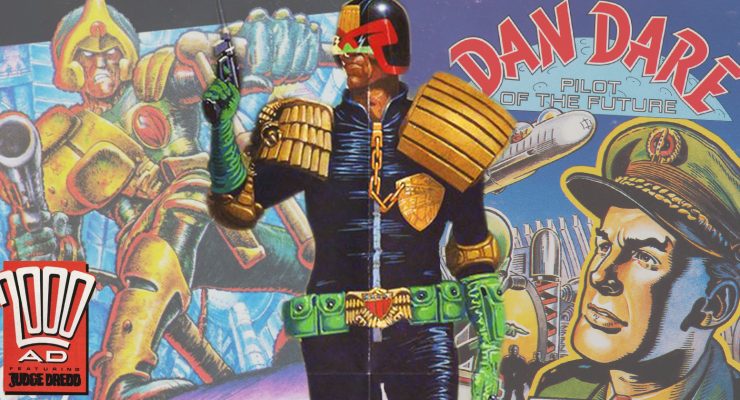Shaun Munro reviews Crash Bandicoot 4: It’s About Time…

Resurrecting a long-dormant video game franchise is a tricky task at the best of times, but given that Crash Bandicoot‘s last full-fat, critically acclaimed entry hit stores all the way back in 1998 – the terrific Crash Bandicoot 3: Warped – there’s an undeniably over-the-odds pressure on developer Toys for Bob (Skylanders) to deliver the goods.
Thankfully fans can breathe a huge sigh of relief, as despite fears that a 2020 Crash Bandicoot game would bear little resemblance to its beloved forebears, Crash Bandicoot 4: It’s About Time is a shockingly reverent follow-up which also acknowledges how the platform genre has evolved over the last two decades.
Like its predecessors, Crash 4‘s plot is functional but fun; Dr. Neo Cortex and Dr. Nefarious Tropy are once again up to no good, this time creating a rift in space and time in order to collect a quartet of “Quantum Masks” which will allow them to enslave the universe. Naturally, it’s up to Crash, his sister Coco, an alternate-universe version of his old girlfriend Tawna, and foe-turned-ally Dingodile to stop them.
If this all sounds a bit Avengers: Endgame, Crash 4 takes a surprisingly modest approach to its timey-wimey shenanigans. The temptation to use time travel as an excuse to remix some of the series’ most beloved levels and moments must’ve been fierce, yet the game is a mostly original outing for Crash and co., albeit with some well-placed nods to what came before.

Toys for Bob have smartly left the core gameplay mechanics largely in tact. The same infuriating yet compulsively addictive platforming feels mostly untouched from the prior games, with agonisingly precise hitboxes sure to have players dying dozens and dozens of times in later levels.
Indeed, anyone expecting the developer to deliver a more muted level of challenge on par with the relatively easy Crash 3 may be surprised to learn that this newest outing is easily the toughest game since the first, with the last few stages damn-near verging on bullet hell insanity. But this old-school approach is mitigated by two incredibly smart deviations from the original game’s loop; a yellow landing indicator is activated by default to help you judge depth while jumping, and you’ve now got unlimited lives.
Easily the most enervating aspect of the first Crash was the player’s finite number of lives, encouraging them to re-play earlier, easier levels to stockpile a huge bank of lives for the tougher later ones. It felt like busy-work intended to pad out the core experience, and so it’s an extreme relief that Crash 4 has no Game Over status at all, instead only keeping count of your deaths.
This makes it far easier to fixate on the difficulty of each delineated segment within a level rather than worry about having to repeat the entire stage from scratch when you run out of lives, ensuring the game as a whole feels less cheap and, most crucially, less-keen to waste your time. Players who want a more classic-style experience, however, can play in Retro mode, which features a traditional life limit.
If the moment-to-moment gameplay is fantastically familiar, it’s wonderfully accentuated by the addition of the aforementioned Quantum Masks, each allowing Crash – or Coco, who players can play the entire game as – to harness a supernatural ability; phasing objects in the environment, spinning like a tornado, slowing down time, and inverting gravity. The periodic use of these masks morphs the central gameplay structure significantly, ensuring that Crash 4 truly feels like a scaling-up of what came before rather than just more of the same.

The time and gravity masks in particular allow Toys for Bob to create a platforming experience like the series has never seen before, and by game’s end players will find themselves forced to quickly switch between masks at a moment’s notice while traversing myriad obstacles. As insanely difficult as this becomes, executing a lengthy sequence while utilising a variety of masks feels akin to pulling off a tricky jazz solo, requiring players to find their flow and tune out everything else.
It does have to be said, though, that even with its contemporary refinements, those new to the series in particular may struggle with the game’s stridently unforgiving approach. Again, platforming asks far more precision of players than most will be used to; there’s little courtesy extended here to those who miss a platform by a hair, and this may result in deaths which many will deem “unfair.”
Checkpointing is also patience-testing at times, with players often asked to perform flawless sequences up to around a minute in length, which sometimes feel like nothing more than an attempt to distend the game’s play-time. Mercifully, though, boss fights now contain checkpoints between phases rather than forcing players to take them out without losing any lives, and like the other sequels, players who die repeatedly will usually find themselves gifted an extra checkpoint to make the journey less arduous.
All in all it’s tough to imagine many long-time fans of the franchise finding overt issue with its degree of challenge, because Crash 4 fuses the core experience fans have known for decades so elegantly with just enough of a modern sensibility.

True to the prior games, it’s also loaded with replay value. If players can hit the end credits in around 7-8 hours, there are around 10 additional non-mandatory alternate timeline levels – starring the likes of Tawna, Dingodile, and Dr. Cortex – which add another two hours to the play-time. Elsewhere, there are 21 extra “Flashback Tape” levels which can be unlocked by discovering VHS tapes scattered around the levels – but you have to reach each tape without dying first.
Each of the game’s stages can also be played in “N. Verted” mode, which mirrors the original level while also layering a unique aesthetic on top, such as that of an old movie, or a colourless world which players will need to splatter with paint in order to progress through.
On top of this, the usual gem collection – which now unlock dozens of alternate Crash and Coco skins – and relic-awarding time trials are back for true obsessives, as well as a pass-the-controller multiplayer mode, ensuring that those who want to dig down deep into the weeds of the game have quite the beefy package of content on their hands.
Aesthetically Crash 4 follows the gameplay’s lead by not reinventing the wheel but simply bringing it in line with contemporary expectations. Nevertheless, the presentation is gorgeous throughout, from Crash and co.’s fluidly animated movements to the beautifully busy levels, some of which represent the most detailed and artistically accomplished the series has ever seen. Aurally, all the sound effects fans know and love are back largely unchanged, while Walter Mair’s musical score is perfectly consistent with what came before, and the voice acting is spectacular across-the-board.
Anyone concerned that a new Crash Bandicoot sequel would be too different from its predecessors or simply feel aggressively dated in 2020 can rest easy; Crash Bandicoot 4: It’s About Time is a dizzying, glorious marriage of old and new sensibilities, confirming the series is in safe, even inspired hands. The Bandicoot is back.

Pros:
+ A seamless continuation of Crash 3.
+ Ludicrously addictive core gameplay.
+ Unlimited lives greatly reduces frustration.
+ Terrific graphics and sound.
Cons:
– Difficulty may deter new players.
– Some annoyingly fiddly controls.
Rating: 9/10
Reviewed on PS4 (also available on Xbox One).
A review copy was provided by the publisher.
Shaun Munro – Follow me on Twitter for more video game rambling, or e-mail me here.











